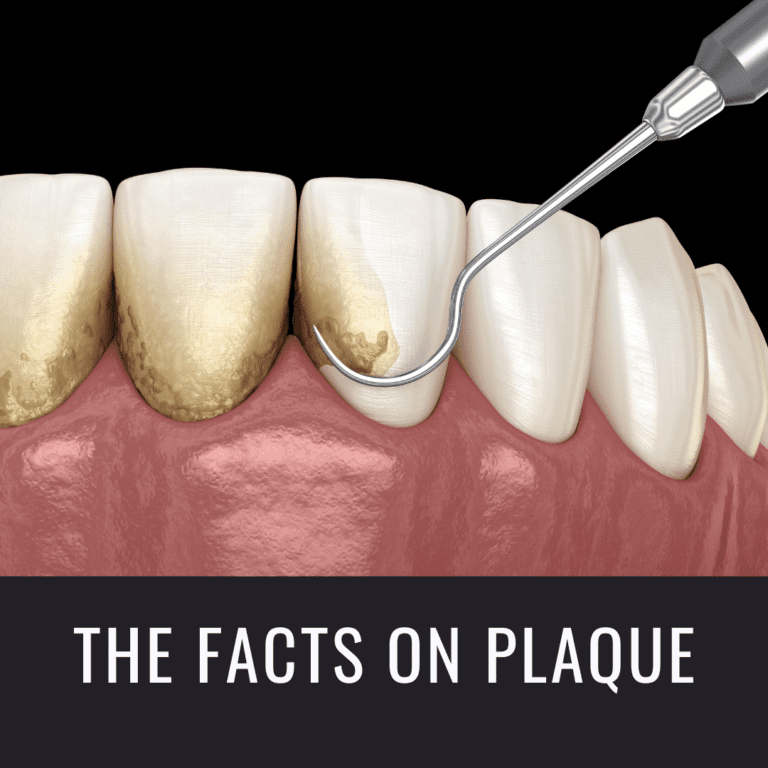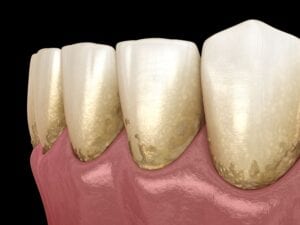The Facts on Plaque

When it comes to your oral health, dental plaque is one of the biggest threats. To understand why Dental plaque can be a threat to your oral health, it is important to first understand more about what dental plaque is and how it changes your teeth and gums. Here are some of the most important facts on plaque:

Fact #1: What is Plaque
Dental plaque is a clear, sticky film that coats the entire surface of your teeth. It is primarily composed of water, however it also contains various microorganisms. Because of this, you may also hear plaque referred to as biofilm, plaque biofilm, bacterial plaque biofilm, microbial plaque, or oral biofilm. Although plaque is primarily made up of water, dried dental plaque is 70% bacteria. Around 1,000 different types of bacteria have been identified in dental plaque, however, there is a good possibility that more types exist and haven’t been identified yet. These bacteria are a natural part of the human mouth and some play an important role in keeping the mouth healthy.
Fact #2: Where Plaque is Found
As mentioned before, plaque is found over the entire surface of your teeth. This means that plaque can be found on the front, back, and sides of your tooth’s crown and root. When plaque forms above the gums, on the tooth’s crown, it is known as supragingival plaque. This type of plaque is the first type of plaque to form, usually within 4-12 hours after brushing or flossing. In cases where supragingival plaque is not removed from the surface of the teeth, then it can spread below the gums. Plaque that forms below the gum line, within the gum pockets or on the tooth roots, is known as subgingival plaque.
Fact #3: How Plaque Forms
Since your body contains the two main components of plaque (water and bacteria), new plaque will always continue to form even after you have removed some. With that being said, plaque forms when bacteria start to collect in the sticky film. In addition to already being in the mouth, bacteria can also enter the mouth when eating, drinking, or breathing. Not only does bacteria regularly enter the mouth, but your mouth also provides an ideal environment for bacteria to live and thrive in. This is because the mouth is warm, moist, and has a pH between 6-7. In order to grow, plaque and bacteria need warmth, moisture, and a pH between 6.7-8.3. Another reason why plaque forms so easily is because the teeth provide an ideal structure that allows bacteria to grow undisturbed. Since teeth do not shed like other body parts, the only thing disturbing bacteria is when you brush or floss. Otherwise, bacteria will simply continue to grow.

Fact #4: Consequences of Too Much Plaque
Plaque is composed of bacteria and is sticky, meaning that it also traps food particles that the bacteria consume. Ultimately, this means that more plaque=more bacteria. Since bacteria are living organisms, everything they consume is converted into an acidic waste product that is then deposited onto the tooth surface. When large amounts of bacteria collect in one area, this means that large amounts of acid are deposited onto the enamel. As strong as enamel is, it will eventually be eroded by the acids and a dental cavity will form. Not only that, but bacteria that accumulates along the gum line has been directly associated with causing gum disease.
Fact #5: How to Get Rid of Plaque
You can never completely get rid of plaque since its two main components are always readily available in your mouth. You can, however, manage the amount of plaque by practicing proper oral hygiene. Brushing twice a day allows you to remove supragingival plaque before it can reach below the gum line, while flossing daily helps you remove plaque from between the teeth and below the gum line. Getting your teeth cleaned and examined every six months also decreases the risk of developing tooth decay and gum disease.






Recent Comments